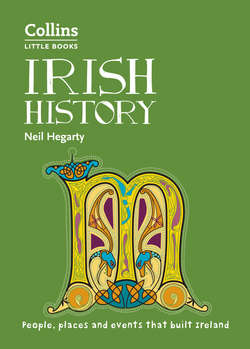Читать книгу Irish History: People, places and events that built Ireland - Neil Hegarty - Страница 28
Dublin
ОглавлениеThis ‘human history’ is best exemplified in the development of the city of Dublin. Settlements had long existed on a ford across the river Liffey and on the shores of a nearby dubhlinn – a black pool – in the river Poddle. In 837, a fleet of sixty Viking ships sailed up the river, and the newcomers established a stockade and base in the area, and put down roots. Doubtless there was violence – and the presence of a defensive wall hints that the Vikings by no means had everything their own way – but the evidence suggests that Christian churches in the district continued to function, implying that the newcomers were as ready to trade as to raid. Indeed, Dublin in time became an entrepôt in a vast Norse trading network with tentacles that reached into the Arctic, the Mediterranean, western Europe, and Russia. Walrus tusks and furs, wine, gemstones, and silver were traded through the city; the slave market throve; local jewellery began to show the influence of symmetrical Norse decorative motifs; and Irish traders made use of Viking middlemen to trade their animal hides and timber abroad. This was a new city, and a new world.
